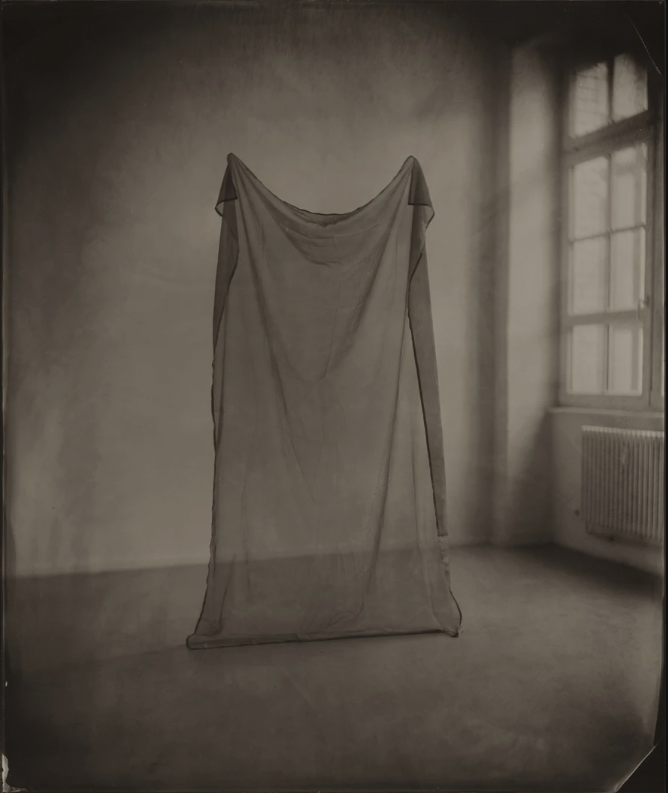the thin veil
Ben Cauchi, The thin veil, 2013. Ambrotype. Museum of New Zealand Te Papa Tongarewa. Image via Te Papa.
The Gaelic festival Samhain (for those of us in the Southern Hemisphere, it’s just passed) marks the end of harvest, and as the cold creeps in, the beginning of the ‘darker-half’ of the year. During this time, the veil between the physical and spiritual worlds is thought to be at its thinnest, meaning that spirits easily cross between realms.
New Zealand artist, Ben Cauchi’s photograph ’The thin veil’ presents us with a hazy gauze suspended by seemingly, nothing. It forms a wilting frame – a door, a portal even – that offers passage to the other side. Working predominantly with wet collodion, Cauchi employs a technique used by photography’s pioneers in the 1830s.
Within the vernacular of photography, particularly those that adopt a style from a by-gone era; sepia-toned and punctuated by the white dots of dust particles, Cauchi questions the very nature of the photograph through its connotations with documentary imagery. The thin veil appears to hang from some invisible spectre. It evokes the Spiritualist movement (which grew concurrently with photography) and their desire to contact the spirits of the dead. It also conjures the tradition of mourning veils (very popular during the 19th century) which were a means of insulating one from grief and harm, while publicly displaying one’s feelings. Even further back, veils protected Roman brides from evil spirits.
Cauchi’s image challenges the assumption that things are as they appear. The photograph itself is real – though the alchemical effects of the wet collodion process make it appear to disintegrate, curling from the corners – but, the subject is an unreliable mirror of the physical world.

